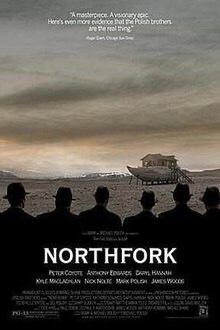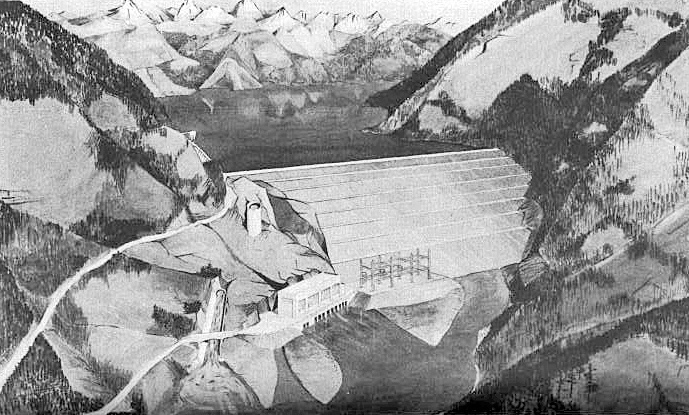
Arab Blues & Imperial Blue Porcelain
6 JunHi All!
It’s been quite a week and I had a riveting art history class Wednesday night, covering a range of topics from £ 1.5 million kitchen vases to throwing the West Coast W in a variety of Renaissance portraits. We also made the leap from Henry Vlll’s Superman pose, hands on hip, with a wide legged stance, to a new vaudeville star and public enemy number two- Legs Akimbo.
As you know, I like to keep you posted on interesting events happening throughout the art world (openings, exhibitions, auctions of note, etc…) and this week’s tidbit centered around the sale of a rare glazed porcelain vase that was bought over four decades for a few hundred British pounds by a British surgeon.
The striking glazed porcelain object then went to the surgeon’s son, where it sat in his kitchen, until a friend of the current owner noticed it and thought there might be more to the piece’s history.

It was authenticated as a rare Chinese vase from the Qianlong imperial court of the 1700s. The vase, intricately decorated with silver and gold cranes and bats on a blue background, would have taken several firings to achieve the incredible visual impact it has, as the enameling techniques utilized various colors that needed to be fired separately at different temperatures to achieve perfection.
The auction house set the estimate at between £100,00 and £150,000 British pounds sterling so it was quite the surprise when after tremendous interest from US, Asian and British bidders the gavel went down at £1,200,000 ( for a total of around £1.5 million with the buyers premium.)
( Note: next art class focuses on the work of Cecilia Beaux, an American artist, born in 1855, who was known for her incredible portraits. Together, with me, ProfValFranco, we’ll explore her beautiful images. We’ll ask why she has fallen off the radar of the contemporary art world, even though she was heralded as one of the greatest portraits artists of her time. By the 1930s, her reputation was at its peak, with her work receiving accolades internationally. She was even lauded as “the American woman who had made the greatest contribution to the culture of the world.”)
Our amazing week continued with our Friday night film: Arab Blues, set in modern day Tunisia and dealing with issues of being heard, immigration, repatriation, corruption, misogyny, and stereotyping and female psychotherapists.

Not everyone looks positively on a woman and a couch in this French language comedy that explores the role of women, and talk therapy, in Tunis. How do people open to the concept of therapy with a female practitioner in a male dominated society, that tends not to talk about its problems? Released eight years after Tunisia’s 2011 revolution that introduced democracy, and two years before Kais Saeid took office as President, the film brings up issues of political freedom in conjunction with issues of women’s rights. Saeid, an alumni of the International Institute of Humanitarian law, set aside the 2014 constitution, dissolved the elected Parliament and just recently dismissed 57 judges in what is being called by observers a push for one-man rule.
The post-screening conversations brought up many varied observations and viewpoints, as well as discussions about societal and cultural norms.
Our next film, I’m Fine ( Thanks for Asking), follows a recently widowed mom as she tries to piece together enough money to get back into an apartment during the pandemic. Danny tries everything from braiding hair to delivering food on roller skates, but is it enough to get her and her young daughter out of a tent and into an apartment in the dry and dusty environs of Pacoima, California? At times humorous and heartbreaking, this film was shot during the constrictive times of the Covid lockdown.
Thanks for joining me for weekly look at wonderful art and film lectures. Looking forward to seeing you this week as we explore more great art & film!
Regards,
ProfValFranco
What I learned this morning…
15 SepAlmost every morning before I start my day I do a little exploration on line…it’s a few minutes spent following random connections between subjects & it tickles & enlightens me much more than reading violent or cranky threads on Facebook, so I find it an enjoyable almost addicting, pursuit. I’ve gone from strings of royalty to Greek philosophers, into screamo while passing through Dadaism, so I thought I should share the morning routes my mind virtually explores…
Today, a trailer on the film Northfork ( I thought it would be a pleasant doc on Long Island wineries, but it’s actually a film on the coercion and shenanigans involved in imminent domain relocation of hold-out families during the construction of a massive dam project in 1955 nNrthfork, Montana.

In actuality, the Glacier View Dam, which was initially proposed at the North Fork site of the Flathead River along the Western border of Montana’s Glacier National Park, faced fierce opposition from various conservation groups and as well as the National Park Service. The massive 416-foot tall dam, would have flooded in over 10,000 acres of parkland, and was never built.

It stands ( symbolically, not literally…) as an example of the importance of environment conservancy, and is an interesting contrast to China’s completed Three Gorges dam. The largest hydroelectric dam in the world, it was officially built to stall the periodic flooding of the Yangtze River, but it’s main raison d’etre is to fuel China’s massive need for electric power. It has wreaked incredible havoc with the lives of millions of displaced people as well as destroying incredible natural environments and habitats.

For an in-depth look at this 21st Century industrial megalith and the destruction of traditional farming life in rural areas of China that it has caused, consider watching Chinese-Canadian director Yung Chang’s wonderful, gut-wrenching documentary, Up the Yangtze.

After the trailer for Northfork, a doc on the incomparable Josephine Baker jumped on. Josephine Baker: The First Black Superstar, a BBC Wales/ForgetAboutIt Films co-production, explores the incredible life of this maverick at a time of suppression in the U.S. of both women and African-Americans. (Note to self: learn more about Josephine Baker, and explore why there hasn’t been a biopic on her life since the 1991 Josephine Baker Story, starring Lynn Whitfield…)

After researching a bit into the socio-political climate in the States and Europe when Baker made her move across the Atlantic, I had to jump into the Jazz Age and then jump back into Dada…which led to a deeper exploration of Magritte’s eponymous painting, The Treachery of Images … ( art is always at the root of everything, somehow…)

The whole concept of representation versus reality ( this is nota pipe…) led to canadian Robert Gentleman’s development of the free software R, as well as being one of the brilliant brains behind the free software Bioconductor that analyzes data on genomes that results from specific kinds of molecular biology experiments.

R, by the way, is a free, open source language and environment ( or system) that is rooted in GNU/Linux ( Linux is the original free open source software ) and is used for graphics and statistical computing.
And you have to love an entity/organization/concept that leads off in its Help section with this advice: “Before asking others for help, it’s generally a good idea for you to try to help yourself”
Wow! Talk about encouraging true independence! I’m at once extremely intimidated, and utterly enamored with R and the concepts behind Gnu/Linux and free, open-source computing.

So far, my morning’s mental wandering made my wish that I had paid more attention back in the day to my required undergrad class on introductory computer programming. Dr. Hsu very patiently tried to guide us through binary basics, zeros and ones, and I still feel that had I paid more attention to really understanding the concepts of preliminary coding, my life today would be very different.
Note to self: add “learn basic coding” to my bucket list.
…and that’s how my morning started off.
Film & Wine pairings- elderberries & Revolution – unexpected deliciousness for the 4th of July
25 JunGravity & Nebraska: Limits, Universes & Universals
25 JanWatching screeners and attending Oscars & SAG awards Q & A sessions the past 2 months have had me unwittingly curate some very strange double features for my viewing pleasure. After watching Gravity & then jumping into Nebraska one night, it seemed like the running theme that week somehow ended up being about parents & the way we live our lives -either because of them, despite them, or as them.
I went from the grand scope of Gravity, where the intimacy & immediacy of death is played out by Sandra Bullock’s character in the vastness of the universe, to the much smaller canvas of a father/son road trip crossing state lines while exploring mental & emotional states.
While seemingly so different, both films shared the exploration of purpose & being. They both look at the questions of existence & use of life, forcing the viewer to ponder who we are & why our lives make a difference? Gravity asks why continue to fight for your life when you feel alone -when your reason to exist as parent is gone – why continue to age? Nebraska seems to ask not just how we age in society but how do our roles as children allow our parents to age? At an age when many people struggle with mid-life crisis issues & ideas of identity & self-acceptance, are we good caregivers of others? Are we good at helping others to age with dignity?
I couldn’t help but love the comparison between these two films & I’m glad I did them back to back. The incredible sound & special effects work of Gravity- where perception constantly shifts from the exterior to the interior, the limitlessness of space to the hyper close area within a space helmet & the reflection captured on the surface of an eye contrasts the endless vistas of the simple road trip and Americana of the American experience in Nebraska while both films tackle the limits & expanse of the mind & heart.
Gravity & Nebraska: Limits, Universes & Universals
14 JanWatching screeners and attending Oscars & SAG awards Q & A sessions the past 2 months have had me unwittingly curate some very strange double features for my viewing pleasure. After watching Gravity & then jumping into Nebraska one night, it seemed like the running theme that week somehow ended up being about parents & the way we live our lives -either because of them, despite them, or as them.
I went from the grand scope of Gravity, where the intimacy & immediacy of death is played out by Sandra Bullock’s character in the vastness of the universe, to the much smaller canvas of a father/son road trip crossing state lines while exploring mental & emotional states.
While seemingly so different, both films shared the exploration of purpose & being. They both look at the questions of existence and use of life, forcing the viewer to ponder who we are & why our lives make a difference? Gravity asks why continue to fight for your life when you feel alone -when your reason to exist as parent is gone – why continue to age? Nebraska seems to ask not just how we age in society but how do our roles as children allow our parents to age? At an age when many people struggle with mid-life crisis issues & ideas of identity & self-acceptance, are we good caregivers of others? Are we good at helping others to age with dignity?
I couldn’t help but love the comparison between these two films & I’m glad I did them back to back. The incredible sound & special effects work of Gravity- where perception constantly shifts from the exterior to the interior, the limitlessness of space to the hyper close area within a space helmet & the reflection captured on the surface of an eye contrasts the endless vistas of the simple road trip and Americana of the American experience in Nebraska while both films tackle the limits & expanse of the mind & heart.
